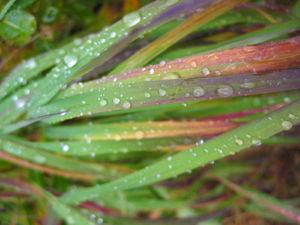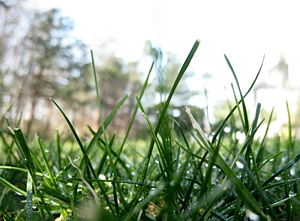Grass: Difference between revisions
imported>Caesar Schinas m (Bot: Update image code) |
mNo edit summary |
||
| (One intermediate revision by one other user not shown) | |||
| Line 25: | Line 25: | ||
==Grasses in animal husbandry== | ==Grasses in animal husbandry== | ||
[[Moorland]]s have a wide variety of grass types, many of them of little or no nutritional value to domesticated animals, in competition with many other types of plant. They are typically used for low-intensity pasture for specially bred animals, the food often being supplemented in winter. On some moors, it is the practice to burn [[heather]] from time to time to allow grass to grow. | |||
===Horses=== | ===Horses=== | ||
===Cattle=== | ===Cattle=== | ||
===Sheep=== | ===Sheep===[[Category:Suggestion Bot Tag]] | ||
Latest revision as of 11:01, 23 August 2024
Grass is the common name given a whole variety of plants, that technically, should be restricted to monocotyledonous plants in the family Poaceae. These true grasses include most of the plants grown as cereals, for pasture, and for lawns. Grasslands, or prairies, are habitats that are marked by open expanses of grasses.
Grasses also include some more specialised crops such as the herb, lemongrass, as well as many ornamental plants, and some weeds. They also include plants often not considered to be grasses, such as bamboos.
Grasses in garden design
Various types of grasses are often used in creation of gardens, both shade and sun, typically serving the purpose of a ground cover. In addition, some tall grasses, such as Miscanthus sinensis (common name of Zebra Grass) are used to serve a more plant-like role rather than a ground cover in garden design.
Lawns
A large amount of property owners own land in addition to their own building, and rather than cover the land with plants, choose to use grass instead. A lawn can consist of one or more of the various types of grasses, and usually covers a moderately large portion of a given yard.
Ornamental grasses
By definition, an ornamental plant is one grown for display purposes rather than it's commercial value. Of ornamental grasses, most are perennials, and as such the majority lose their color and begin to recede in the fall and winter months. However, bamboo, among others, is an exception to this rule, being an evergreen plant, and a select group of ornament grasses are also annuals.
Grasses in savannas and prairies
Prairies are a major natural habitat of grasses, typically a low elevation area with very few trees. In these atmospheres what are known as prairie grasses thrive, with the majority of the land covered by a tall, thick coat of the grass. This, when combined with characteristic large droughts, make fire a large threat to prairies.
Savannas, meanwhile, have more trees than prairie areas, though they are still considered to be widely spaced apart. In addition, both land areas tend to be categorized by grasses being the dominant plant.
Grasses in agriculture
Grasses in animal husbandry
Moorlands have a wide variety of grass types, many of them of little or no nutritional value to domesticated animals, in competition with many other types of plant. They are typically used for low-intensity pasture for specially bred animals, the food often being supplemented in winter. On some moors, it is the practice to burn heather from time to time to allow grass to grow.
Horses
Cattle
===Sheep===

